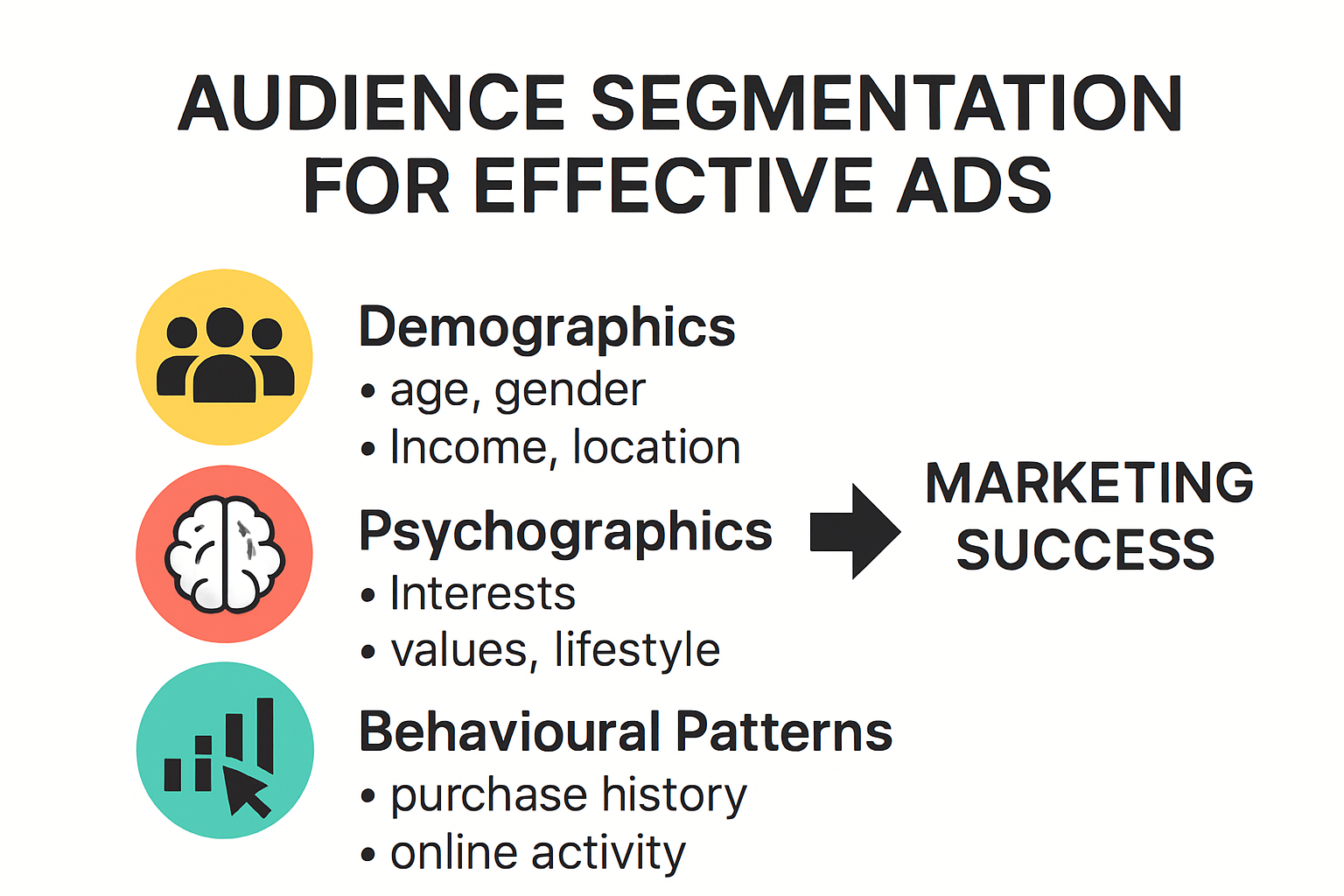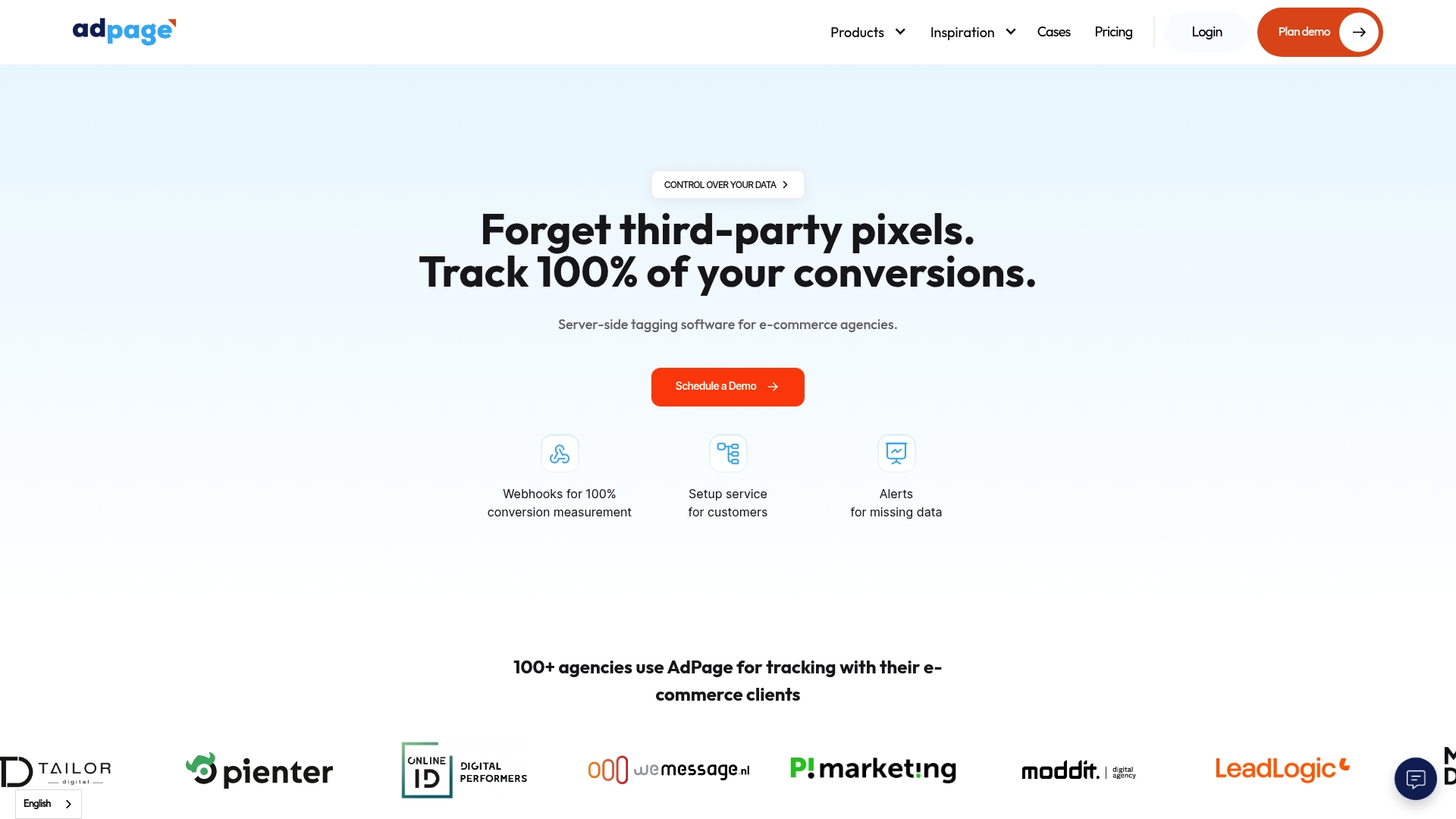Marketing success now depends on more than clever slogans or flashy images. Fresh research shows that adverts using human elements or sensory cues can raise purchase intent by up to 30 percent. Yet most brands still miss the mark with generic messages that barely scratch the surface. True impact comes from precise audience targeting and data fuelled storytelling that spark real connection.
Table of Contents
- Understanding Your Audience And Goals
- Crafting Compelling Ad Creatives
- Leveraging Analytics For Optimization
- Adapting Strategies For Higher Conversion
Quick Summary
| Takeaway | Explanation |
|---|---|
| Understand Your Audience | Comprehensive audience segmentation and profiling, including demographic, psychographic, and behavioral insights, is essential for crafting targeted communication strategies that resonate with consumers. |
| Align Strategic Goals | Precise objective setting that matches specific audience segments is critical. Marketers should focus on measurable goals that impact business performance rather than vanity metrics. |
| Leverage Data-Driven Insights | Utilizing advanced analytics and machine learning for data collection and integration allows marketers to derive actionable insights that inform advertising strategies and optimize performance. |
| Employ Emotional Storytelling | Effective ad creatives should incorporate visual storytelling and emotional connections to enhance brand awareness and purchase intent through authentic representation and relatable narratives. |
| Adapt for Conversion | Implementing real-time bidding, user experience optimization, and predictive conversion modeling can significantly improve conversion rates through tailored and responsive marketing approaches. |
Understanding Your Audience and Goals
Creating effective ads requires a profound understanding of your audience and clear strategic goals. Successful marketing begins with deep audience insights and precise objective setting, transforming random advertising attempts into targeted communication strategies.
Audience Segmentation and Profiling
Understanding your audience goes beyond basic demographic information. Research from the University of Florida's Extension Marketing guide emphasizes the importance of comprehensive audience segmentation. Marketers must analyze multiple dimensions including:
- Demographic Characteristics: Age, gender, income, education level
- Psychographic Insights: Personal values, attitudes, lifestyle preferences
- Behavioral Patterns: Online interactions, purchasing habits, media consumption
By developing nuanced audience profiles, brands can craft messages that resonate deeply and trigger meaningful engagement. This approach transforms generic advertising into personalized communication that speaks directly to consumer motivations.

A clear summary of core audience segmentation dimensions is shown below to illustrate their respective roles in crafting targeted ads.
| Segmentation Type | Description | Examples |
|---|---|---|
| Demographic | Statistical socioeconomic characteristics | Age, gender, income, education |
| Psychographic | Personality traits, lifestyles, interests | Values, attitudes, lifestyle preferences |
| Behavioural | Observable actions and habits | Purchase habits, online behavior, media usage |
Strategic Goal Alignment
Harvard Business School research highlights the critical connection between audience understanding and marketing objectives. Effective ad creation requires precise goal setting that aligns with specific audience segments. These goals might include:
- Increasing brand awareness among a specific demographic
- Driving conversions for a particular product line
- Encouraging specific consumer actions
Marketers must move beyond vanity metrics and focus on objectives that genuinely impact business performance. This means developing clear, measurable goals that can be tracked and optimized through sophisticated analytics platforms.
Data Driven Audience Insights
The National Institutes of Health advises that effective communication requires understanding information gaps and audience motivations. Modern marketers have unprecedented access to data that can illuminate consumer behavior. Sophisticated tracking tools enable granular insights into audience preferences, enabling more targeted and effective advertising strategies.
By combining comprehensive audience research with clear strategic objectives, brands can create ads that are not just seen but truly understood and acted upon. The future of advertising lies in precision targeting and genuine audience connection.
Crafting Compelling Ad Creatives
Creating ad creatives that capture attention and drive action requires a strategic blend of creativity, psychology, and data insights. In 2025, successful ad design transcends aesthetic appeal and demands a deeper understanding of audience engagement mechanisms.
Visual Storytelling and Emotional Connection
Research from the Journal of Advertising Research reveals that advertisements incorporating human elements and sensory cues significantly enhance brand awareness and purchase intent. Visual storytelling has emerged as a powerful technique to establish emotional connections with audiences. This approach involves crafting narratives that resonate with viewers' personal experiences, aspirations, and challenges.
Effective visual storytelling requires:
- Authentic Representation: Using genuine, relatable imagery
- Narrative Arc: Creating a clear emotional journey
- Contextual Relevance: Aligning visuals with audience expectations
The table below summarizes key elements and benefits of visual storytelling in ad creatives.
| Storytelling Element | Purpose | Benefit to Advertising |
|---|---|---|
| Authentic Representation | Use of genuine, relatable imagery | Builds trust and emotional resonance |
| Narrative Arc | Creating an emotional journey | Engages viewers and sustains attention |
| Contextual Relevance | Aligning visuals with audience expectations | Increases message effectiveness |
Data Driven Creative Optimization
Machine learning research demonstrates innovative approaches to refining ad creatives. By leveraging advanced analytics and A/B testing methodologies, marketers can systematically improve ad performance. This data-driven approach allows for continuous iteration and optimization of creative elements.
Key optimization strategies include:
- Analyzing click through rates
- Recommending targeted keyphrases
- Generating alternative ad text variations
Technical Composition and Design Elements

Compelling ad creatives blend aesthetic appeal with strategic design principles. Successful advertisements balance visual attractiveness with clear communication of value propositions. Critical design considerations include color psychology, typography, whitespace management, and intuitive visual hierarchies.
Marketers must pay attention to technical details such as:
- Consistent brand visual identity
- Responsive design across multiple platforms
- Clear and concise messaging
The future of ad creatives lies in the seamless integration of human creativity and technological insights. By combining emotional intelligence with data-driven refinement, brands can develop advertisements that not only capture attention but also drive meaningful engagement and conversions.
Leveraging Analytics for Optimization
In the rapidly evolving digital marketing landscape, analytics has transformed from a supplementary tool to a critical strategic driver for advertising success. Marketers must now embrace sophisticated data analysis techniques to remain competitive and deliver precision targeted campaigns.
Advanced Data Collection and Integration
Research from the Asian Business Review highlights the emerging role of artificial intelligence in integrated marketing communications. Modern analytics platforms enable comprehensive data collection across multiple touchpoints, providing unprecedented insights into consumer behavior. These sophisticated systems aggregate information from websites, social media, mobile applications, and offline interactions to create holistic audience profiles.
Key data integration strategies include:
- Cross Platform Tracking: Monitoring user interactions across different digital environments
- Unified Customer Profiles: Consolidating data from multiple sources
- Real Time Data Processing: Enabling immediate insights and adaptations
Predictive Performance Modeling
A study published in the Journal of Knowledge Learning and Science Technology demonstrates how predictive analytics can revolutionize marketing strategies. By analyzing historical performance data and identifying complex behavioral patterns, marketers can anticipate future campaign outcomes with remarkable accuracy.
Predictive modeling techniques andcompass:
- Analyzing historical conversion rates
- Identifying potential customer segments
- Forecasting likely engagement scenarios
Artificial Intelligence Driven Optimization
Research from the International Journal of Computer Trends and Technology reveals sophisticated frameworks for implementing machine learning in marketing analytics. Artificial intelligence algorithms can now process vast datasets, generating actionable insights that human analysts might overlook.
AI optimization strategies include:
- Automated performance prediction
- Dynamic ad content adjustment
- Personalized audience targeting
By embracing these advanced analytics approaches, marketers can transform raw data into strategic intelligence. The future of advertising lies not just in collecting information but in extracting meaningful, actionable insights that drive measurable business outcomes.
Adapting Strategies for Higher Conversion
Conversion optimization represents the critical junction where marketing strategy transforms potential interest into tangible business results. In 2025, successful marketers must deploy sophisticated techniques that dynamically adapt to evolving consumer behaviors and technological capabilities.
Real Time Bidding and Targeting
Research on Statistical Modeling for Improving Efficiency of Online Advertising reveals groundbreaking approaches to enhancing digital advertising effectiveness. Machine learning algorithms now enable unprecedented precision in real-time bidding strategies, allowing marketers to make instantaneous, data-driven decisions about ad placements and audience targeting.
Key real-time targeting strategies include:
- Contextual Relevance: Matching ad content with immediate user context
- Dynamic Price Optimization: Adjusting bidding strategies based on predicted conversion probability
- Micro Moment Targeting: Identifying and capitalizing on precise user intent signals
User Experience and Visual Intensity
A comprehensive study on maximizing user conversion demonstrates the delicate balance between visual design and user engagement. Marketers must carefully calibrate visual elements to create interfaces that are both aesthetically compelling and functionally intuitive. The research suggests a gradual approach to increasing visual intensity, ensuring that design enhancements do not compromise user experience.
Critical considerations for optimizing visual experience include:
- Maintaining clean, purposeful design
- Ensuring intuitive navigation
- Creating visual hierarchies that guide user attention
Predictive Conversion Modeling
Innovative research on predicting conversions highlights the potential of advanced embedding techniques in understanding user behavior. By analyzing browsing histories and developing sophisticated predictive models, marketers can anticipate conversion probabilities with remarkable accuracy.
Advanced predictive modeling techniques andcompass:
- Analyzing historical user interaction patterns
- Creating sophisticated URL embedding models
- Developing personalized conversion prediction algorithms
The future of conversion optimization lies in the seamless integration of technological sophistication and human centered design. Successful marketers will leverage advanced analytics, machine learning, and nuanced understanding of user psychology to create strategies that not only attract attention but systematically guide users toward meaningful actions.
By embracing these adaptive strategies, brands can transform their approach from generic advertising to precision targeted communication that resonates deeply with individual user needs and preferences.
Frequently Asked Questions
How can I effectively target my audience in advertising?
Understanding your audience involves thorough audience segmentation and profiling, including demographic, psychographic, and behavioral insights. Tailoring your ads to resonate with specific audience segments enhances engagement and conversion rates.
What role does emotional storytelling play in ads?
Emotional storytelling enhances brand awareness and purchase intent by connecting with audiences on a personal level. Crafting narratives that reflect genuine experiences and aspirations can make your advertisements more relatable and impactful.
How can data analytics improve my advertising performance?
Data analytics allows marketers to gain actionable insights into consumer behavior and preferences. By leveraging advanced data collection, integration, and predictive modeling, brands can optimize their ad strategies for better outcomes.
What strategies should I implement to increase conversion rates?
To increase conversion rates, focus on real-time bidding, user experience optimization, and predictive conversion modeling. These strategies allow marketers to tailor their approaches dynamically, ensuring they respond effectively to evolving consumer behaviors.
Ready to Transform Your Ad Performance in 2025?
If you are struggling with incomplete data, inaccurate conversion tracking, or feeling frustrated that your carefully crafted ad creatives lose impact because you cannot monitor every customer journey, you are not alone. The article highlighted how audience insights and data-driven optimization are the future of advertising, yet many marketing teams are still blocked by unreliable analytics and data loss from traditional tracking.

Let AdPage show you the difference that secure, server-side tracking and total conversion visibility can make. Move beyond guesswork with AdPage's powerful ecommerce tracking platform and see how seamless integrations and comprehensive GDPR compliance can unlock your next level of advertising success. Take charge of your results and discover how to capture 100 percent of your conversions today.



.png)
